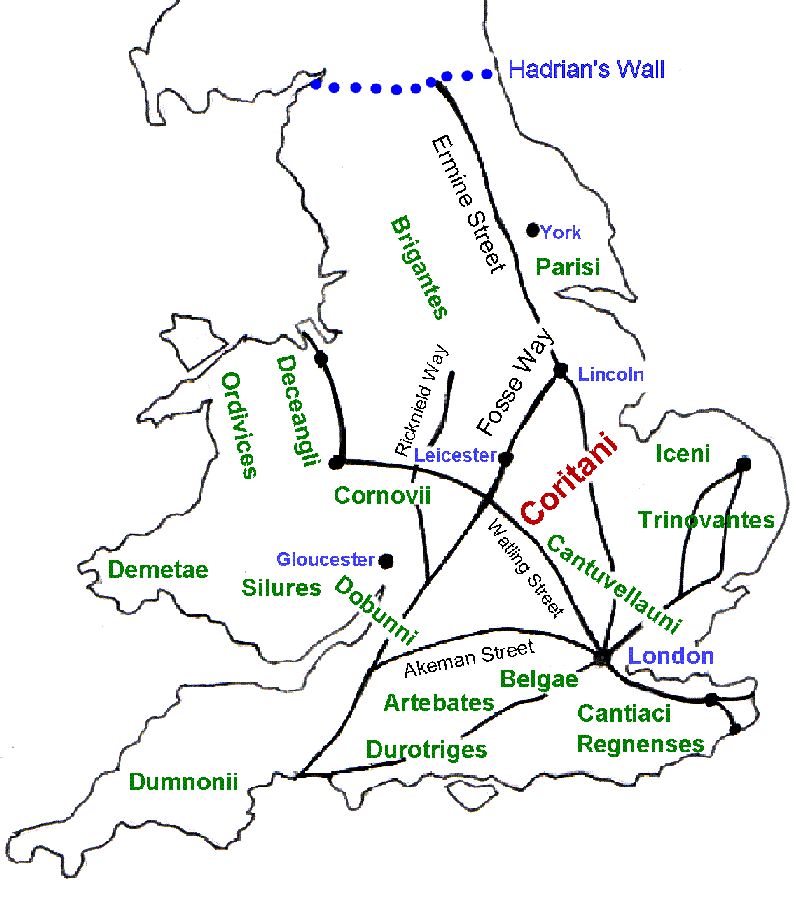Post by mouse on Feb 5, 2011 16:04:07 GMT -5
Motorway maximus: Unearthed, a stunning Roman super-highway built 1,900 years ago
The 15ft-high road ran from London to Exeter
It was a route once trod by legionnaires as they marched across a conquered land.
But, eventually, the Romans left Britain and the magnificent highway they created was reclaimed by nature and seemingly lost for ever.
Now, some 2,000 years after it was built, it has been uncovered in the depths of a forest in Dorset.
And, remarkably, it shows no sign of the potholes that blight our modern roads.
Half-mile long: Laurence Degoul from the Forestry Commission stands on a 15ft-high section of Roman road uncovered in Puddletown Forest in Dorset
Constructed by the Roman invaders as part of a route from London (Londinium) to Exeter (Isca), the 85ft wide earthwork stands more than 15ft high and consists of a sweeping road with deep ditches at the side.
It was so densely covered by trees, however, that although its existence was known about, it simply could not be found until now.
One of the country’s first roads, it was uncovered when the Forestry Commission, acting on advice from English Heritage expert Peter Addison, cleared the Norway spruce fir trees in Puddletown Forest.
Mr Addison said it was the biggest Roman road he had come across and that it was probably designed to make a statement. It is thought that it might have been built shortly after the Roman conquest in the first century and its scale would have been chosen to intimidate people living nearby.
Between deep ditches: Experts believe the road's scale was to deliberately intimidate the locals - the site of a Roman legion marching along the road would have had the desired effect
The section uncovered was built from gravel and is amazingly well-preserved thanks to never having been under the plough and later covered with a dense pine wood
The sight of a Roman legion marching along it would surely have had the desired effect.
It is thought the road would have been made from layers of gravel and the fact it still exists is testimony to the skills of the builders.
There is a central cobbled ‘street’, which would have been used for rapid troop movements, and outer ‘droving’ roads for livestock, as well as ditches for water drainage.
Mr Addison said: ‘It’s extraordinary. It has been known about but when the Forestry Commission wanted to find it, they struggled.
‘The trees were planted so tightly it was difficult to move through them. But they called me in and I managed to find it.
‘It is part of the road that goes from Badbury Rings to the fort at Dorchester and was part of the network of roads from Old Sarum (now Salisbury) to Exeter.
Read more: www.dailymail.co.uk/sciencetech/article-1353574/Motorway-maximus-Unearthed-stunning-Roman-super-highway-built-1-900-years-ago.html#ixzz1D7madEB3
The 15ft-high road ran from London to Exeter
It was a route once trod by legionnaires as they marched across a conquered land.
But, eventually, the Romans left Britain and the magnificent highway they created was reclaimed by nature and seemingly lost for ever.
Now, some 2,000 years after it was built, it has been uncovered in the depths of a forest in Dorset.
And, remarkably, it shows no sign of the potholes that blight our modern roads.
Half-mile long: Laurence Degoul from the Forestry Commission stands on a 15ft-high section of Roman road uncovered in Puddletown Forest in Dorset
Constructed by the Roman invaders as part of a route from London (Londinium) to Exeter (Isca), the 85ft wide earthwork stands more than 15ft high and consists of a sweeping road with deep ditches at the side.
It was so densely covered by trees, however, that although its existence was known about, it simply could not be found until now.
One of the country’s first roads, it was uncovered when the Forestry Commission, acting on advice from English Heritage expert Peter Addison, cleared the Norway spruce fir trees in Puddletown Forest.
Mr Addison said it was the biggest Roman road he had come across and that it was probably designed to make a statement. It is thought that it might have been built shortly after the Roman conquest in the first century and its scale would have been chosen to intimidate people living nearby.
Between deep ditches: Experts believe the road's scale was to deliberately intimidate the locals - the site of a Roman legion marching along the road would have had the desired effect
The section uncovered was built from gravel and is amazingly well-preserved thanks to never having been under the plough and later covered with a dense pine wood
The sight of a Roman legion marching along it would surely have had the desired effect.
It is thought the road would have been made from layers of gravel and the fact it still exists is testimony to the skills of the builders.
There is a central cobbled ‘street’, which would have been used for rapid troop movements, and outer ‘droving’ roads for livestock, as well as ditches for water drainage.
Mr Addison said: ‘It’s extraordinary. It has been known about but when the Forestry Commission wanted to find it, they struggled.
‘The trees were planted so tightly it was difficult to move through them. But they called me in and I managed to find it.
‘It is part of the road that goes from Badbury Rings to the fort at Dorchester and was part of the network of roads from Old Sarum (now Salisbury) to Exeter.
Read more: www.dailymail.co.uk/sciencetech/article-1353574/Motorway-maximus-Unearthed-stunning-Roman-super-highway-built-1-900-years-ago.html#ixzz1D7madEB3








